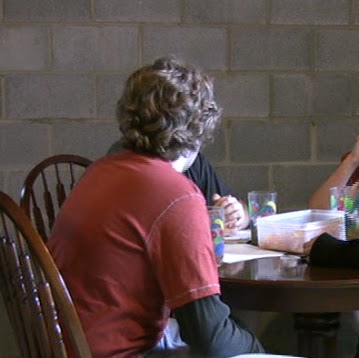Patrick O Weber
age ~70
from Lompoc, CA
- Also known as:
-
- Patrick Owen Weber
- Patrick M Weber
- Patrick Oweber
- Pat M Weber
- Patrick Webber
- Patrick O'Weber
Patrick Weber Phones & Addresses
- Lompoc, CA
- 2088 Newcastle Dr, Oxnard, CA 93036 • 8059889314
- Mountain View, CA
- Santa Clara, CA
- Sunnyvale, CA
- Buffalo, NY
- Santa Barbara, CA
- 2088 Newcastle Dr, Oxnard, CA 93036
Work
-
Position:Production Occupations
Education
-
Degree:Associate degree or higher
Isbn (Books And Publications)


Le Grand Cinquieme: Le Lumineux Destin Du Dalai Lama Qui Faconna Le Tibet Roman
view sourceAuthor
Patrick Weber
ISBN #
2709623749

Le Guide De La Belgique Royale: Itineraires Sur Les Traces De Nos Souverains De 1830 a Nos Jours
view sourceAuthor
Patrick Weber
ISBN #
2873670444

Dix Princesses: Gloires, Drames Et Bonheurs Des Princesses De Laeken
view sourceAuthor
Patrick Weber
ISBN #
2873862556


Resumes

Music Teacher
view sourceWork:
Musical Surprise Az
Music Teacher
Music Teacher

Patrick Weber
view source
Patrick Weber
view source
Press Operator
view sourceWork:
Wts Media
Press Operator
Press Operator

Patrick Weber
view source
Patrick Weber
view source
Member Of Technical Staff Mechanical
view sourceWork:
Member of Technical Staff Mechanical

Patrick Weber
view sourceSkills:
Regulatory Affairs
Grill
Grill
Name / Title
Company / Classification
Phones & Addresses
Managing
Custom Photographic Services, A Limited Liability Company
Commercial Photographic Services
Commercial Photographic Services
6948 Sierra Ct, Pleasanton, CA 94568
INTEGRATED AUTOMATION CONSULTING LLC
President
HESTIA TECHNOLOGIES, INC
990 Richard Ave STE 109, Santa Clara, CA 95050
Us Patents
-
Method Of Underfilling An Integrated Circuit Chip
view source -
US Patent:6495083, Dec 17, 2002
-
Filed:May 17, 1999
-
Appl. No.:09/312705
-
Inventors:Patrick O. Weber - San Jose CA
-
Assignee:Hestia Technologies, Inc. - Santa Clara CA
-
International Classification:B29C 4502
-
US Classification:26427215, 26427217, 29841, 425116, 425812
-
Abstract:An integrated circuit chip package according to the present invention includes an integrated circuit chip mounted on a substrate by a plurality of solder bumps. A mold compound is used for underfilling air gaps between the chip and the substrate. The integrated circuit chip package is formed by placing the chip and substrate within a mold cavity and pressing a transfer mold compound into the mold cavity. Air spaces between the integrated circuit chip and the substrate are underfilled by the mold compound as it is pressed in between the integrated circuit chip and the substrate. Air is allowed to escape from between the chip and the substrate during the underfilling through a vent which extends through the substrate. The underfilling material may also be used to encapsulate the chip at the same time that underfilling is performed.
-
Chip Package With Molded Underfill
view source -
US Patent:6560122, May 6, 2003
-
Filed:Sep 28, 2001
-
Appl. No.:09/967676
-
Inventors:Patrick O. Weber - Mountain View CA
-
Assignee:Hestia Technologies, Inc. - Santa Clara CA
-
International Classification:H01L 2331
-
US Classification:361783, 361760, 361770, 257667, 257737, 257738, 257778, 257787, 257789, 174260
-
Abstract:An integrated circuit chip package according to the present invention includes an integrated circuit chip that is mounted on a substrate by a reflow process and by a plurality of solder bumps. At least one standoff is located between the circuit chip and the substrate to maintain a distance between the circuit chip and the substrate during the reflow process. A mold compound is used for underfilling air gaps between the chip and the substrate. The integrated circuit chip package is formed by placing the chip and substrate within a mold cavity and pressing a transfer mold compound into the mold cavity. Air spaces between the integrated circuit chip and the substrate are underfilled by the mold compound as it is pressed in between the integrated circuit chip, the standoffs and the substrate. Air is allowed to escape from between the chip and the substrate during the underfilling through a vent which extends through the substrate. The underfilling material may also be used to encapsulate the chip at the same time that underfilling is performed.
-
Integrated Circuit Package Including Opening Exposing Portion Of An Ic
view source -
US Patent:6667439, Dec 23, 2003
-
Filed:Aug 16, 2001
-
Appl. No.:09/931378
-
Inventors:Matthew M. Salatino - Satellite Beach FL
Patrick O. Weber - Mountain View CA -
Assignee:Authentec, Inc. - Melbourne FL
Hestia Technologies, Inc. - Santa Clara CA -
International Classification:H01L 2300
-
US Classification:174 521, 361728, 361752, 257690, 257787
-
Abstract:An IC package preferably includes an IC and encapsulating material surrounding the IC, with the encapsulating material having an opening therein to define an exposed portion of the IC. Vestigial portions of encapsulating material may be left on the exposed portion of the IC and spaced inwardly from a periphery of the opening based upon molding using a mold protrusion which includes a bleed-through retention channel positioned inwardly from peripheral edges. The channel collects and retains any bleed-through of the encapsulating material. The IC package may further include a leadframe carrying the IC. The leadframe may include a die pad, finger portions, and a plurality of die pad support bars. The die pad may be downset below a level of the finger portions. Each of the die pad support bars may be resiliently deformed to accommodate the downset of the die pad.
-
Methods And Apparatus For Making Integrated Circuit Package Including Opening Exposing Portion Of The Ic
view source -
US Patent:7049166, May 23, 2006
-
Filed:Aug 16, 2001
-
Appl. No.:09/931587
-
Inventors:Matthew M. Salatino - Satellite Beach FL, US
Patrick O. Weber - Mountain View CA, US -
Assignee:Authentec, Inc. - Melbourne FL
Hestia Technologies, Inc. - Santa Clara CA -
International Classification:H01L 21/00
H01L 21/44
H01L 21/48
H01L 21/50 -
US Classification:438 64, 438115, 438116, 438117, 438118, 438123, 438124, 438127, 26427215
-
Abstract:A method for making an IC package preferably includes providing a mold including first and second mold portions, and wherein the first mold portion carries a mold protrusion defining an IC-contact surface with peripheral edges and a bleed-through retention channel positioned inwardly from the peripheral edges. The method also preferably includes closing the first and second mold portions around the IC and injecting encapsulating material into the mold to encapsulate the IC and make the IC package having an exposed portion of the IC adjacent the mold protrusion. Morever, the bleed-through retention channel retains any encapsulating material bleeding beneath the peripheral edges of the IC contact surface, and prevents the encapsulating material from reaching further onto the exposed portion of the IC. The method may also include releasing the IC package with the exposed portion from the mold.
-
Light-Emitting Pixel Array Package And Method Of Manufacturing The Same
view source -
US Patent:20100014234, Jan 21, 2010
-
Filed:Jul 16, 2008
-
Appl. No.:12/174518
-
Inventors:Patrick O. Weber - Santa Clara CA, US
-
Assignee:HESTIA TECHNOLOGIES, INC. - Santa Clara CA
-
International Classification:H05K 7/18
B29D 11/00
H05K 3/20 -
US Classification:36167906, 264 17, 29831
-
Abstract:A method of manufacturing a display monitor, the method comprising: molding a pixel array frame having a plurality of pixel cavities and at least one pixel wall positioned adjacent to at least two pixel cavities, at least one of the pixel cavities having a light pit therein; molding a light diffusing material in the pixel cavities, wherein the light diffusing material does not enter the light pit; selecting a substrate having a top surface and a bottom surface, the substrate having a light source, such as a LED, on the top surface; coupling the bottom surface of the substrate to a printed circuit board configured to controllably operate the light source, wherein the light source is received within the light pit; and coupling the molded pixel array frame to the substrate.
-
Thermal Management Method And Device For Solar Concentrator Systems
view source -
US Patent:20110017264, Jan 27, 2011
-
Filed:Feb 19, 2009
-
Appl. No.:12/389310
-
Inventors:Patrick Weber - Santa Clara CA, US
Kevin Gibson - Redwood City CA, US
Ramon Rosal Reglos - San Ramon CA, US
Rick Briere - Santa Clara CA, US
Alelie Funcell - Fremont CA, US -
Assignee:Solaria Corporation - Fremont CA
-
International Classification:H01L 31/052
-
US Classification:136246
-
Abstract:A photovoltaic device. The photovoltaic device includes a photovoltaic region including a surface region and characterized by a first thermal expansion constant. The surface region includes a first portion and a second portion, the second portion includes a first edge region and a second edge region. The photovoltaic device includes a concentrator element comprising substantially of a polymer material and being characterized by a second thermal expansion constant. The concentrator element includes an aperture region and an exit region. The photovoltaic device includes an elastomer material to couple the first portion of the surface region of the photovoltaic region to the exit region of the concentrator element, while the first edge region and the second edge region remain exposed. The first edge region and the second edge region allow for compensation by at least thermal expansion of the concentrator element for a change in temperature ranging from about −45 Degrees Celsius to about 95 Degrees Celsius to maintain the exit region to be optically coupled to the photovoltaic region.
-
High Density Memory Modules
view source -
US Patent:20130058148, Mar 7, 2013
-
Filed:Feb 24, 2012
-
Appl. No.:13/404995
-
Inventors:Allan CANTLE - Westlake Village CA, US
Patrick WEBER - Oxnard CA, US
Mark GILLIAM - Thousand Oaks CA, US
Prashant JOSHI - Thousand Oaks CA, US -
International Classification:G11C 5/06
-
US Classification:365 63
-
Abstract:Solid state memory modules are disclosed having increased density for module size/footprint. Different embodiments also provide for improved interconnect arrangements between the memory modules and the corresponding field programmable gate array (FPGA), micro-processor (μP), or application-specific integrated circuit (ASIC). These interconnects can provide for greater module interconnect flexibility, operating speed and operating efficiency. Some memory module embodiments according to the present invention comprises a plurality of solid state memory devices arranged on a first printed circuit board. A second printed circuit board is on and electrically connected to the first printed circuit board, with the second printed circuit board having a pin-out for direct coupling to a host device.
-
Chip Package With Molded Underfill
view source -
US Patent:60381361, Mar 14, 2000
-
Filed:Oct 29, 1997
-
Appl. No.:8/959927
-
Inventors:Patrick O. Weber - San Jose CA
-
Assignee:Hestia Technologies, Inc. - Sunnyvale CA
-
International Classification:H01L 2331
-
US Classification:361783
-
Abstract:An integrated circuit chip package according to the present invention includes an integrated circuit chip mounted on a substrate by a plurality of solder bumps. A mold compound is used for underfilling air gaps between the chip and the substrate. The integrated circuit chip package is formed by placing the chip and substrate within a mold cavity and pressing a transfer mold compound into the mold cavity. Air spaces between the integrated circuit chip and the substrate are underfilled by the mold compound as it is pressed in between the integrated circuit chip and the substrate. Air is allowed to escape from between the chip and the substrate during the underfilling through a vent which extends through the substrate. The underfilling material may also be used to encapsulate the chip at the same time that underfilling is performed.

Magalie Patrick Weber Pel...
view source
Patrick Weber
view source
Tyler Patrick Weber
view source
Patrick Gus Weber
view source
Mark Patrick Weber
view source
Patrick T Weber
view source
Janet Patrick Weber
view source
Patrick S. Weber
view sourceMyspace

Patrick Weber
view source
Patrick Weber
view sourceGoogleplus

Patrick Weber
Work:
F.H.Weber
Grunert Transporte
Rötzer Spedition
Grunert Transporte
Rötzer Spedition
Education:
MS Leukersdorf
Tagline:
Keep on Trucking

Patrick Weber
Work:
Sauder Manufactoring - Warehousing (7)
Education:
Defiance High School
Relationship:
In_a_relationship
Tagline:
"We are a way for the cosmos to know itself"

Patrick Weber
Work:
WEIN & CO
Education:
Vienna University of Technology - Software Engeneering

Patrick Weber
Work:
Hewlett-Packard - Applications Consultant (2006)
Education:
VWA Stuttgart - Business Information Systems

Patrick Weber
Education:
Southeastern Louisiana University - Biology

Patrick Weber
Work:
Societystyle - Owner/graphic designer (1999)
Tagline:
Sometimes you eat the bar, and sometimes the bar eats you.

Patrick “Swiss” Weber
Education:
Purdue University - BSME
Tagline:
The Real Swiss

Patrick Weber
Education:
Hollidaysburg Senior High
Tagline:
Hi! I'm patrick! I like screamo!
Flickr
Youtube
Classmates

Patrick Weber
view sourceSchools:
Cumberland Valley Christian High School Chambersburg PA 1982-1986
Community:
Donald Shockey

Patrick Weber
view sourceSchools:
South Decatur High School Greensburg IN 1983-1987
Community:
Mary Phillips, Marshall Burton

Patrick Weber
view sourceSchools:
St. Mary's High School Colorado Springs CO 1971-1975
Community:
Ashley Hendley, Joyce Reeves

Patrick Weber
view sourceSchools:
Stewart County High School Dover TN 1985-1989
Community:
Mackenzie Otten

Patrick Weber
view sourceSchools:
Kiel High School Kiel WI 1983-1987

Patrick Weber
view sourceSchools:
Germantown High School Germantown WI 1973-1977
Community:
Benny Esparza, Terri Novotny

Patrick Weber
view sourceSchools:
LeClaire Elementary School Edwardsville IL 1973-1980, Edwardsville Middle School Edwardsville IL 1980-1982

Patrick Weber
view sourceSchools:
Loudonville High School Loudonville OH 1972-1976
Community:
Mitch Miller, Jean Blakely
Plaxo

Patrick Weber
view sourceGrants Pass, OR

Patrick F. Weber
view source
Patrick Weber
view sourceZürichDirector at EQT, one of the leading private equity houses in the Nordics.

Patrick Weber
view sourceSan Diego Surfing Academy LLC

Patrick Weber
view sourceTI

Patrick Weber
view sourceGrants Pass, OR
Get Report for Patrick O Weber from Lompoc, CA, age ~70














